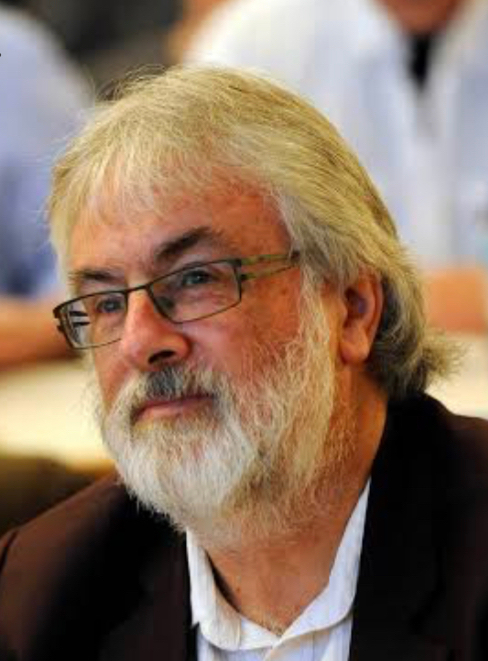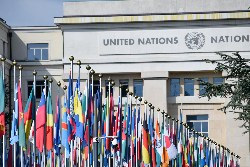At 4pm on Monday 4 October Prime Minister Jacinda Ardern gave a post-cabinet media conference to report on the latest decisions in the Covid-19 pandemic response, specifically the Delta variant outbreak.
It was to be primarily about the future of the lockdown alert level (currently 3) in Auckland along with the Level 2 status for the rest of the country (a few days earlier Level 3 had been introduced into parts of Waikato, primarily around Raglan and Hamilton following community transmission originating from Auckland).
Elimination strategy
Since March 2020 on the advice of experts, including epidemiologists, infectious disease specialists and modellers, New Zealand has pursued a successful policy of elimination towards community transmission. Based on zero tolerance it included strict border controls, masks, physical distancing, contact tracing and, as a last resort, hard and fast lockdowns.
Its success was reflected in one of the lowest mortality rates in the world (five per million people). Had we followed the alternative mitigation (including suppression) strategy we would have had thousands of deaths instead of 28 (26 before Delta).
It also meant that the country’s economy performed much better than it would have otherwise done; best performing in the OECD. New Zealand was also one of the freest countries in the world with fewer and shorter lockdowns.
The Government’s response to the first variant infection (from Delta rampant New South Wales) on 17 August was elimination. It was hard and fast beginning with Level 4 (full lockdown).
After quickly increasing infection cases, overwhelmingly in Auckland, the peak daily number was 82 on the 11th day (compared with a peak of 89 on the 8th and 11th day of the previous national lockdown in March-April 2020). At the time the full vaccination rate was less than 20% of those eligible (32% had a single dose).
Then, despite fluctuations, new daily cases declined steadily to an average of 18 cases. The exponential growth that devastated New South Wales and Victoria was avoided. Further, after a small number of cases in Wellington, the outbreak was confined to Auckland comprising around a third of the country’s population.
The situation was looking encouraging. The rest of the country quickly transitioned first to Level 3 and then to Level 2. The Government continued to emphasis its commitment to zero tolerance (elimination) with increasing confidence. Then, to the surprise of many, on 22 September it lowered Auckland’s alert level to 3.
What went wrong
Level 3 has been amusingly described as Level 4 with takeaways. But this is simplistic. Non-essential businesses and organisations can resume work provided that they ensure physical distancing for staff who can’t work from home. This is a significant constraint (hospitality is confined to takeaways) but there is still a reasonable degree of activity, most visibly with tradespeople.
One of the objectives of Level 4 is to reduce the movement of people as much as possible; Level 3 increases this movement.
After around a week of Level 3, there was a discernible increase in daily infections leaving the average 18 daily rate feeling like a distant memory. It is now bouncing around the 30s and 50s reaching 60 on 10 October. Modellers are advising that it might soon reach 100 which would significantly increase hospitalisations.
A compounding factor was the vaccine rollout. Overall it has progressed according to schedule which was dictated by vaccine supply factors outside the Government’s control.
The rollout was staged based on four groups: border workers and their families; those who are most at risk of catching the virus (eg, frontline health workers); those most likely to suffer severe outcomes were they to be infected (eg, over 65s and people with health conditions); and finally the rest of the population.
The failure was in the third group, especially those living with deprivation including disproportionately Māori and Pasifika. Many are considered to be ‘marginalised’ from the rest of society. The level of community engagement by health authorities and resources was not sufficient to ensure better vaccination rates. Consequently we are now playing catch-up which assists virus transmission.
Weakening of elimination
With the benefit of hindsight the decision to move Auckland to Level 3 was an indicator of a weakening of the zero tolerance elimination strategy. Confirmed by the Prime Minister’s uncharacteristic coherence-deficient 4 October media conference, she implied but didn’t explicitly state that her government was discontinuing the elimination strategy and transitioning to something else without elaborating on what this was.
There have been several journalists who have being writing informed quality articles on the pandemic response since its commencement. Their analysis was that the Government had backed down by moving away from elimination to suppression (tolerating a level of virus transmission).
Significantly there was no government attempt to disabuse the public of this change. But it wasn’t until a week later that Ardern, when interviewed live on Radio New Zealand’s Morning Report (11 October), confirmed that suppression would now be used in Auckland but elimination would continue elsewhere. This added to the public confusion. If elimination was so successful outside Auckland, why not tighten up rather than loosen its application within Auckland.
Fortunately, while not repairing the damage, her media conference later the same day was, thank goodness, an improvement on this botch-up (see below).
Trying to understand the reasoning
It is difficult to understand the reason for the Government’s backdown. Most likely it was spooked by the stubbornness of the Delta tail (which Ardern now calls a ‘tentacle’) and its upwards trend, following its earlier downwards movement, for which the surprise decision to move down to Level 3 is the most likely cause.
There had been some public pressure to abandon elimination including from some business quarters and an opportunist public intervention by former Prime Minister John Key, along with the National and ACT parties. The means was disingenuity by conflating elimination with lockdowns and obscuring the more important zero tolerance of community transmission.
By itself this pressure would not have been sufficient. But this is a social liberal technocratic and, consequentially, elitist government. This limits the scope of its analytical lens making it capable of being spooked by an unexpected worsening turn of events (especially when in part of its own making). In this context the pressure to abandon elimination may have been a tipping point.
Gutted
The immediate public response of high profile infectious diseases specialist Dr Siouxsie Wiles to this shift was to say she was “grieving” and “gutted”. This was a personal response but “gutted” is an apt description of the sentiment of the wider health system. This wasn’t just public health and infectious diseases specialists. Across the board specialists, modellers and other health professionals were gutted.
The health system simply won’t cope if Delta takes off. This is most pronounced in public hospitals. They are too rundown due to successive governments failing to address severe health professional shortages, including specialists and nurses. It will not take much to overwhelm our hospitals.
Early in the Delta outbreak it only took less than 50 Covid hospitalisations for the three district health boards in Auckland (with three of the largest hospitals in the country) to request other DHBs to prepare to loan health professionals to the metropolitan city. Delta creates ‘long Covid’ hospitalisations. That is, compared with earlier Covid variants, patients need to remain in hospital longer.
High risks
There are two high risks in this decision to abandon elimination. First, New Zealand could follow the disastrous experiences of New South Wales and Victoria. If the daily infection rate continues upward the increases will soon become exponential (surges). This would overpower hospitals and put primary care under severe pressure.
A further consequence is that access to hospital and primary care for other diagnosis, care and treatment would be significantly reduced; denied for many.
It doesn’t automatically follow that there will be exponential infection growth in New Zealand. But, to the extent that it happens, the public is likely to hold government responsible for the bad consequences.
Second, what has characterised the Government’s elimination strategy is that it has been made on expert advice including epidemiologists and modellers. Jacinda Ardern won the trust and confidence of the public with her compassionate evidence-based media conferences in the first national lockdown and after. She grasped and articulated the science well.
This level of trust and confidence was essential for ensuring the level of public support necessary to successfully limit the impact of the pandemic. Without it there would have been no ‘team of five million’.
But Ardern could not have achieved this high trust and confidence if she had not accepted and conveyed this expert advice. That advice came from experts who the public trusted. But the ‘trusted’ have now been disregarded by government (marginalised in fact). The confidence of the ‘trusted’ in government is waning and this is becoming increasingly visible.
This amounted to a rejection of the advice of an expert advisory group chaired by leading epidemiologist Professor David Skegg on what was required to reopen New Zealand’s borders. On the assumption of high vaccination rates, part of it was continuation of elimination (zero tolerance towards new cases) without lockdowns; not a goal of no new cases.
The problem for government is that the effect of marginalising the experts who have served it well since the start of the pandemic is not just to undermine their confidence in it. The public’s confidence in government would also be undermined as a consequence, thereby reducing ‘kindness’ to political disingenuity and the ‘team of five million’ to irrelevancy.
Restrictions removal
Compounding the difficulty was the Prime Minister’s 4 October announcement of the removal of some restrictions in Auckland while under Group 3. One was sensible. Small physical distanced group outdoor picnics were approved, including in parks. This was based on public health advice within the Health Ministry recognising the very low risk of outdoor virus spread, although it does increase people movement.
But the Prime Minister then went on to announce that other removals of restrictions were under consideration. These included opening early child education centres and schools and, ambiguously, ‘retail’. An initial problem was confusion due to the failure to consult with these sectors.
What this also highlighted was the confusion caused by the complexity of adding additional steps (restriction removals) within an alert level. Had these and her other announced additional steps been implemented, it would have been difficult to distinguish the difference between Level 3 in Auckland and Level 2 elsewhere. Alert level differentiations requirements should be as uncomplicated as possible.
Transparency needed
There is an obligation for greater transparency of cabinet decision-making over both the decisions to drop Auckland to Level 3 and to abandon the elimination strategy in Auckland at least.
The Prime Minister states that cabinet takes the advice of the Director-General of Health. But advice can be given and considered in different ways. It could be that Dr Bloomfield recommended these decisions or he did not.
There is another option. He could have been informed in advance of what cabinet wanted to happen and ask to advise on how best this might be done. Whatever the case might be the ‘team of five million’, including the trusted experts, deserve to know.
Where to next
At the media conference yesterday (11 October) the Prime Minister gave a better performance avoiding much of the implicitness of the previous week. Subject to no negative occurrences, both Northland and Waikato, will return to Level 2 on 14 October. To date, elimination has worked in these areas.
Further, no further restrictions are scheduled to be removed in Auckland under Group 3. If the past week hadn’t happened one would not have known that elimination was on its way out. The whole approach was elimination without actually using the word, although ambiguity still remained. There was also a positive start to mandatory vaccination requirements beginning with the health and education sectors.
The extent of the ammunition the Government’s elimination backdown has given to its opponents and the confusion it has given its supporters can’t be under-estimated. It becomes politically confusing as well. Labour has effectively moved to National’s suppression approach of being more tolerant to community transmission. This leaves the differences to bragging and point-scoring.
When looking at Australia in order to learn about Delta, it should not just look at New South Wales and Victoria as examples of what not to do. The other four states are successful examples of what to do by following zero tolerance towards community transmission. This is where we should take our lead.
The Government should never had lowered Auckland to Level 3. Level 4 is tough but it was working. Aside from putting hospitals and the public at increased risk, it is likely to increase the combined length of lockdown (Levels 4 and 3). The longer in Level 4, the more likely zero tolerance is effective, and the more likely less time would be spent in Level 3.
Ideally Government should have returned Auckland to Level 4 this week. But the political courage to do this wasn’t there even though it may have reduced the overall time in lockdown.
It is stating the obvious that high vaccination rates are critical, even with an elimination strategy. The Prime Minister’s visit to Tairawhiti last week was excellent. We need more of it. But we also need to increase resourcing, including more vaccination buses and improving access of non-government organisations to vulnerable unvaccinated people.
The decisions on mandatory vaccinations yesterday are encouraging as is the willingness to develop vaccine certificates for certain situations. Further work on anti-viral treatments helps. Pharmac is making good progress here.
Border security around Auckland needs to be strengthened. Only fully vaccinated essential workers and special exemptions should be allowed to cross the border. Containers and concrete blocks should be used to block supplementary roads that can’t be policed.
All this would be reinforced by a zero tolerance approach to community transmission as has been used successfully in most Australian states. At a certain point, subject to high vaccination coverage, it may be that zero tolerance morphs into something else, but not yet and not without engagement with the expertise that resides outside government.
It is right to be gutted with the Government’s performance last week. Last week there was anger. There is a risk that this anger evolves in disillusionment. Anger is the better emotion because it often means not giving up on influencing governments. Disillusionment often leads to giving up; we can’t risk this.
The Government should learn from orthopaedic surgeons. They have no concept of ambiguity. This orthopaedic characteristic is worthy of political adoption in order to reach a clear unambiguous elimination position.



 Gordon Campbell: On bird flu, AUKUS entry fees and Cindy Lee
Gordon Campbell: On bird flu, AUKUS entry fees and Cindy Lee Binoy Kampmark: Israel’s Anti-UNRWA Campaign Falls Flat
Binoy Kampmark: Israel’s Anti-UNRWA Campaign Falls Flat Peter Dunne: Luxon Gets Out His Butcher's Knife - Briefly
Peter Dunne: Luxon Gets Out His Butcher's Knife - Briefly Binoy Kampmark: Warring Against Encryption, Australia Is Coming For Your Communications
Binoy Kampmark: Warring Against Encryption, Australia Is Coming For Your Communications Gordon Campbell: On Fast Track Powers, Media Woes And The Tiktok Ban
Gordon Campbell: On Fast Track Powers, Media Woes And The Tiktok Ban Binoy Kampmark: Censorship Wars, Elon Musk, Safety Commissioners And Violent Content
Binoy Kampmark: Censorship Wars, Elon Musk, Safety Commissioners And Violent Content